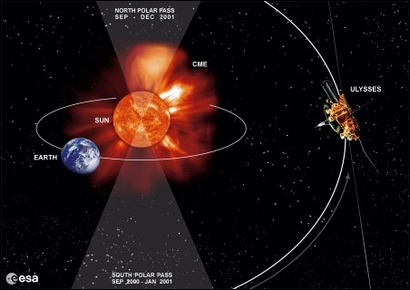After more than 17 years of research of the sun's poles and the sun's effect on the space near it, the spacecraft surrenders to the hostile environment * communication with it is cut off as a result of the engineers' attempts to save it

Ulysses has orbited the Sun's poles three times before, in 1994-1995, 2000-2001 and 2007. Ulysses' long orbit around the sun lasts 6 years, and it reaches Jupiter and returns for another round. As it moves further from the sun, its temperature drops, and if the temperature drops to 2ºC its fuel - hydrazine - will freeze. This was not a problem in the past because the spacecraft carries heaters that maintain a temperature suitable for the operation of the systems. But more than 17 years of activity have affected the spacecraft - radioactive isotopes and natural wear and tear have consistently reduced the power that the spacecraft produces. And today it is unable to provide enough power to operate its communication systems, heating systems and scientific instruments.
The teams responsible for operating the systems tried to extend the lifespan of the spacecraft by monitoring and distributing the power between the various systems. Disconnecting the communication systems, for example, allowed power to be transferred to the scientific instruments and heating. But the first attempt to carry out the move in January 2008 disconnected the transmitters and they never came back to work.
The decision was not taken lightly, it was the only way to extend the life of the mission. But apparently the engineers did not correctly estimate the amount of power that would be saved or alternatively the power was not transferred correctly to the scientific instruments. The result is that the transmitters do not work and Ulysses will not be able to send large amounts of information back to Earth. The second result is that the heaters did not get the extra power so its fuel systems will slowly freeze until the spacecraft is out of use.
According to the team, the spacecraft was supposed to come to life within the next year or two, but unfortunately it will happen a little earlier - within a month or two. Ulysses provided extraordinary scientific data, the study of the sun gained momentum, and the various discoveries were groundbreaking. The team promised to continue extracting every bit of information from the spacecraft as possible.

2 תגובות
R.I.P…